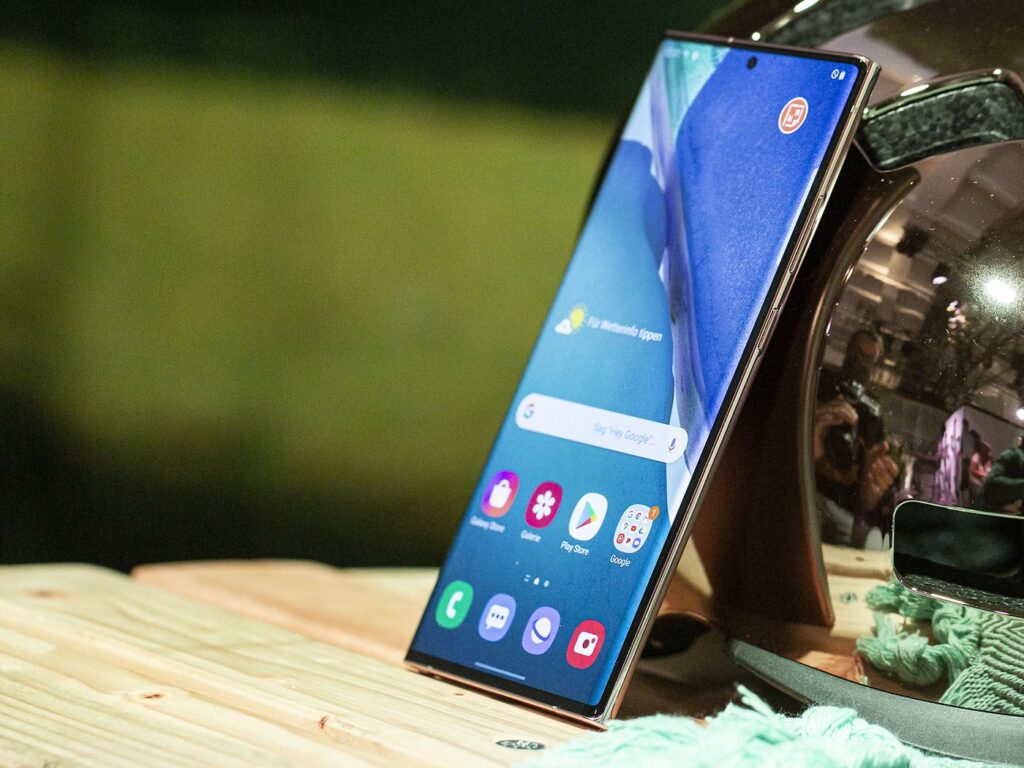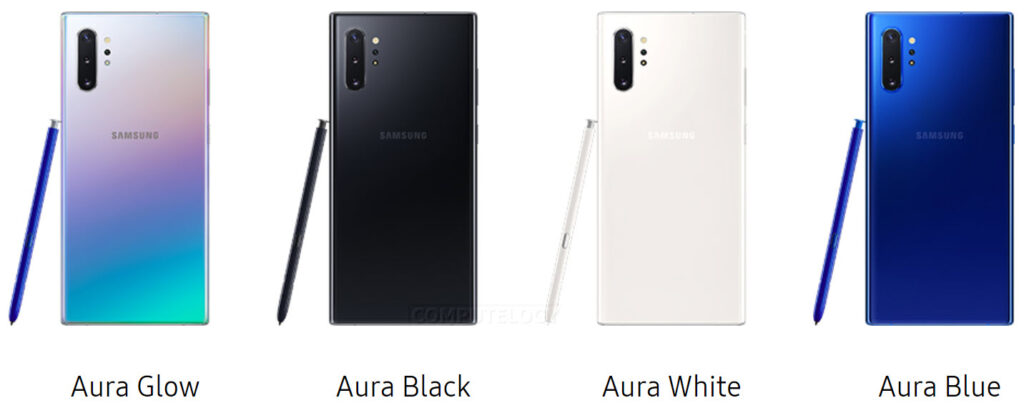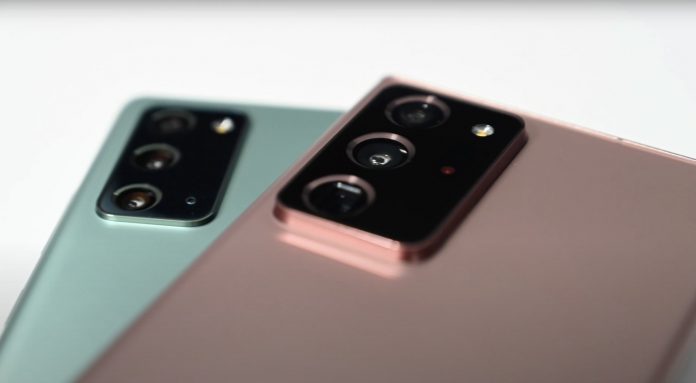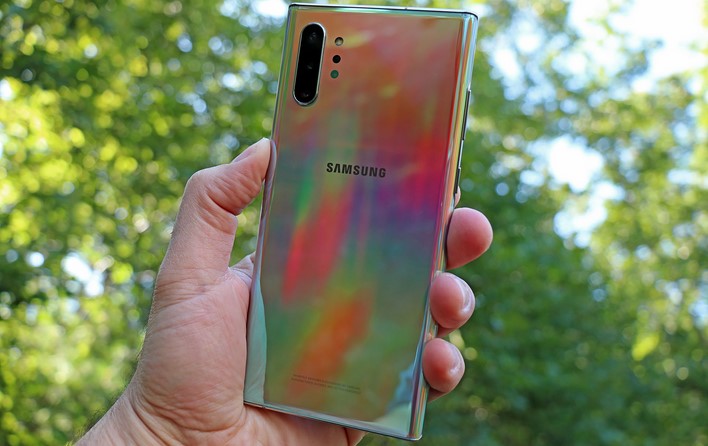Galaxy Note 20 Ultra and the Galaxy Note 10 Plus are phones that ended an era at Samsung. They were launched in 2020 and 2019, respectively, with high-end technical data sheets, including 12 GB of RAM. The latest Note smartphones can still be found on the web: the Galaxy Note 20 Ultra (black, white, and bronze) sells for $850 on Amazon. The Galaxy Note 10 Plus (black, white, and Aura Glow) costs a little less: it comes out to $590.99.
Both smartphones are still referenced in the high-end category. In the specifications are screens that have already been considered the best in the market, and powerful cameras in both models. Learn about the similarities and differences between the Galaxy models in the following lines.
Galaxy Note 20 Ultra and the Galaxy Note 10 Plus DataSheet
| Galaxy Note 20 Ultra 5G | Galaxy Note 10 Plus | |
|---|---|---|
| Launch | September 2020 | August 2019 |
| Current price | $850 | $590.99 |
| Screen | 6.9 inches | 6.8 inches |
| Screen resolution | Quad HD+ (3088 x 1440 pixels) | Quad HD+ (3040 x 1440 pixels) |
| Processor | Exynos 990 | Exynos 9825 |
| RAM | 12 GB | 12 GB |
| Storage | 256 GB | 256 GB |
| Memory card | MicroSD up to 1TB | MicroSD up to 1TB |
| Main camera | 108 MP main, 12 MP ultra-wide, and 12 MP telephoto | 12 MP main, 12 MP telephoto, 16 MP ultra-wide, and 3D |
| Front camera | 10 MP | 10 MP |
| Operating system | Android 10 | Android 9 (Pie) |
| Battery | 4,500 mAh | 4,300 mAh |
| Dimensions and weight | 164.8 x 77.2 x 8.1 mm; 208 g | 162.3 x 77.2 x 7.9 mm; 196 grams |
| Colors | bronze, black and white | black, white, and “aura glow” |
Screen and design
The construction of the phones is similar, but the Note 20 Ultra is heavier than its predecessor. It is 208 grams compared to 196 grams for the Note 10 Plus. Overall, it is a larger device, with even the screen increased from 6.8 to 6.9 inches. Both phones are built with glass in the body of device, but while the edges of the Note 10 Plus is aluminum, the Note 20 Ultra’s edges are made of stainless steel, which is more resistant to scratches and dents.

The S-Pen is housed at the bottom of both phones. Simply press the area to release it and use it on the smartphone. Looking at the bottom, however, one notices that there is no standard headphone jack, with the USB-C jack being adopted for both charging and headphone use.
The screens of the smartphones are made of reinforced glass to protect them from impacts and scratches, being Gorilla Glass 6 technology for the Note 10 Plus and the newer Gorilla Glass Victus for the Note 20 Ultra. Both phones feature AMOLED panels, which display fairly fluid images with vibrant and sharp colors, but there is a difference between them. The Galaxy Note 10 Plus’ panel is Dynamic AMOLED and the Galaxy Note 20 ultra is Dynamic AMOLED 2X, an evolution of the previous one.

At the time of launch, the Galaxy Note 10 Plus’ screen was touted as the best screen so far. So, it is only natural that Samsung has been striving to make it even better. Thus, the Note 20 Ultra’s display brought everything from the previous screen along with an image refresh rate that can reach 120 Hz, twice found in essential smartphones. This difference should be felt especially when using games with larger image transitions, which will make good use of the technology.
Despite the absence of the 3.5 mm headphone jack, both phones still offer features that are increasingly scarce in high-end phones, such as the inclusion of the charger box and the headphone jack adapted to the model. And it’s worth mentioning that both are also IP68 certified against water and dust ingress.
The Galaxy Note 20 Ultra is available in black, white, and bronze (which resembles a metallic pink). The Galaxy Note 10 Plus comes in black, white, and Aura Glow, a special shade that changes color depending on the incidence of light.
Camera

The Note line’s cameras have always been a benchmark of quality. Under the screen is a discreet camera for selfies, centrally located and without a notch. Here there is equality between the phones as the sensor of both has 10 megapixels. But there is a big difference in the main camera. Despite having powerful cameras, the Galaxy Note 20 Ultra’s main module is far superior.
The Note 20 Ultra has a 108-megapixel main camera with laser focus, which should make the user’s life easier and allows them to point the phone and record photos. There is also the use of artificial intelligence in the camera that enables automatic adjustments to contrast, exposure, and ISO, among other attributes. The large size of the sensor makes the user’s life easier and generates well-defined images, besides allowing the use of digital zoom without loss of quality.
And speaking of zoom, it is also a highlight of the Note 20 Ultra. The telephoto lens, which has optical stabilization, can be zoomed in up to 5 times just by moving the lens. This zoom, combined with the digital zoom, ensures up to 50 times closer proximity to the object being photographed. And recording using the Note 20 Ultra’s camera reaches the impressive resolution of 8K.
These are the sensors that make up the camera of the Galaxy Note 20 Ultra 5G:
- 108 MP main camera (f/1.8)
- 12 MP telephoto lens (f/3.0)
- 12 MP Ultra Wide (f/2.2)
- 10 MP front-facing (f/2.2)

The Note 10 Plus camera doesn’t do much either, but in this case, there is no exaggeration. The main sensor has 12 megapixels, with optical stabilization. The optical zoom is also present, but it is only twice as close, and the camera module films in 4K resolution “only”, which is already very good when compared to other smartphones in this category.
The highlight is the Time of Flight (ToF) sensor, also called 3D, which, in simplified form, recognizes the object being photographed and assists in recording photos with a blurred background, and in using the camera for augmented reality content. The cameras on the Galaxy Note 10 Plus are organized as follows:
- 12 MP main camera (f/2.4)
- 12 MP telephoto lens (f/2.1)
- 16 MP Ultra Wide (f/2.2)
- 0.3 MP 3D (ToF)
- 10 MP (f/2.2) Front-facing
Performance and storage
As a differentiator against the S line of their respective launch years, both the Galaxy Note 10 Plus and Galaxy Note 20 Ultra brought have 128 GB of storage and offer the possibility of expanding the memory up to an additional 1 TB via microSD card.
The equality extends to RAM, with 12 GB for each, but it ends there. The processor that equips the Galaxy Note 10 Plus is Samsung’s own Exynos 9825. This chip has eight cores and can reach a maximum speed of 2.73 GHz. This is a component that scores well in performance reviews such as AnTuTu, but it underperforms the rival present in the Note 20 Ultra.
The processor in the latest Galaxy Note released is the Exynos 990, which overall performs better than its predecessor. The performance of this processor is up to 22% better when used per core, and this is reflected in a better experience with heavier games and applications. It is important to emphasize, however, that these are still excellent processors today, which should deliver good performance in most everyday smartphone activities.
Battery

One of the main differences between the two devices lies in the battery. While the Galaxy Note 10 Plus features a 4,300 mAh battery, the Galaxy Note 20 Ultra received 4,500 mAh from Samsung. While not a huge increase, the extra power should allow the device to remain unplugged for an entire day, as long as the screen is used in 60 Hz refresh mode.
The last two models in Samsung’s Note lineup also feature fast charging. The Korean company promises to charge up to 50 percent of the battery in 30 minutes for the Galaxy Note 20 Ultra. This is due to the 25W of the charger in the 2020 model. Despite this, the Galaxy Note 10 Plus manages to be superior to its successor by supporting fast charging of up to 45W.
Both phones feature the Wireless PowerShare function, which allows you to charge other devices by positioning them under the phone’s back cover. This charging is also fast and provides up to 15W of power. So the Samsung Galaxy Buds headphones and Samsung Galaxy Watches can enjoy the extra charge from the devices.
Android Version

Samsung has the custom of updating its smartphones for a period of four years. The commitment is to security updates for the devices. In the case of the Galaxy Note 20 Ultra, in addition to being a year ahead of its rival, the phone is cast to receive Android 12 and One UI 4, newer versions of Google’s operating system, and Samsung’s customization as early as 2022.
The Galaxy Note 10 Plus should also get the update to the latest operating system in 2022. Nevertheless, since the device was released in 2019, it is likely to be left off the list of updated phones soon. In addition, the model has recently suffered from fingerprint recognition glitches due to the use of film.
The system update is important as it brings more security to the device and implements improvements and new visual customizations. The latest versions of Samsung’s system promise to improve battery consumption and enhance users’ privacy when using cameras and microphones. And One UI has also revamped the notifications area of the operating system.
Additional Features
The first point to highlight is that the Galaxy Note 20 Ultra is the only one of the duo that features 5G. The Galaxy Note 10 Plus has only the 4G LTE connection.

Both bring NFC connection for payment by proximity and Bluetooth 5.0, which is not the latest standard but still offers good connection stability. In addition, the smartphones can enjoy the best Wi-Fi connectivity, as they can connect to 2.4 and 5 GHz networks, and are certified to use Wi-Fi 6 networks, one of the latest standards and with better signal.
One feature that differentiates the Note line from other Samsung lines is the S Pen. Besides the use on the screen, it is possible to use it as a “remote control”, since the accessory connects via Bluetooth to the cell phone. Nevertheless, there is a difference in the response time of each smartphone. The Galaxy Note 20 Ultra has only 9 milliseconds of latency between use and response while the number jumps to 42 milliseconds on the Galaxy Note 10 Plus.
Pricing and Availability
Both the Galaxy Note 10 Plus and the Galaxy Note 20 Ultra are no longer part of Samsung’s official product catalog. On Amazon, however, the Note 10 Plus can be found for prices in the $590.99 range, while the Note 20 Ultra sells for $850.
This post may contain affiliate links, which means that I may receive a commission if you make a purchase using these links. As an Amazon Associate, I earn from qualifying purchases.

